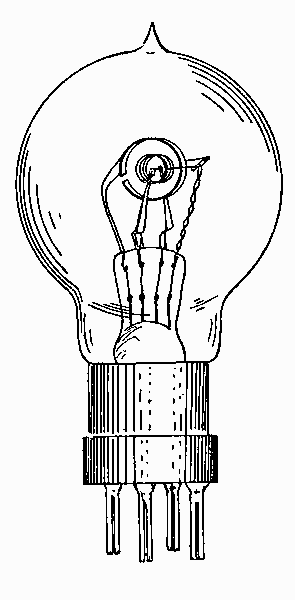Page Content - skip navigation

The French obtained a sample Pliotron in 1914 and developed the "French" TM valve. Two types were made, both with spherical envelopes, four pin bases, cylindrical anodes 15 mm long and 10mm in diameter, and straight tungsten filaments 21 mm. long. The 'S' type spiral grid was 16mm. long and 4.5 mm in diameter with 12 turns of 0.2mm.of nickel wire. The 'Métal' type grid was only 11 turns of slightly thicker molybdebum wire.
They were initially made in France by E.C & A. Grammont, trademark Fotos, under the direction of Gènéral Ferié and later a factory at Ivry belonging to France Compagnie des Lampes, trademark Métal made the Métal variant. During WWI some 100,000 were made.
These valves needed 4-volts on the filament for reception, when they drew about 0.75A. When operated like this the valves had a life of about 800 hours. For use in transmitters the filament supply was increased to 5-6V with a considerably shortened life. For reception use an anode supply of 25-100 volts was typical. Higher voltages up to 150V could be used but this required a negative grid bias supply for detection. In transmitting use up to 500 volts of HT was used.
This valve is the basic pattern for all the various 'R' type valves produced by British manufacturers during the war. The valve was developed in the U.K. by adding getters (usually phosphorus) and by 'squashing' the anode and grid into an oval cross section, which reduced the electrode spacing and increased the mutual conductance..
This page last modified by AJC on Sunday 23rd May-2010